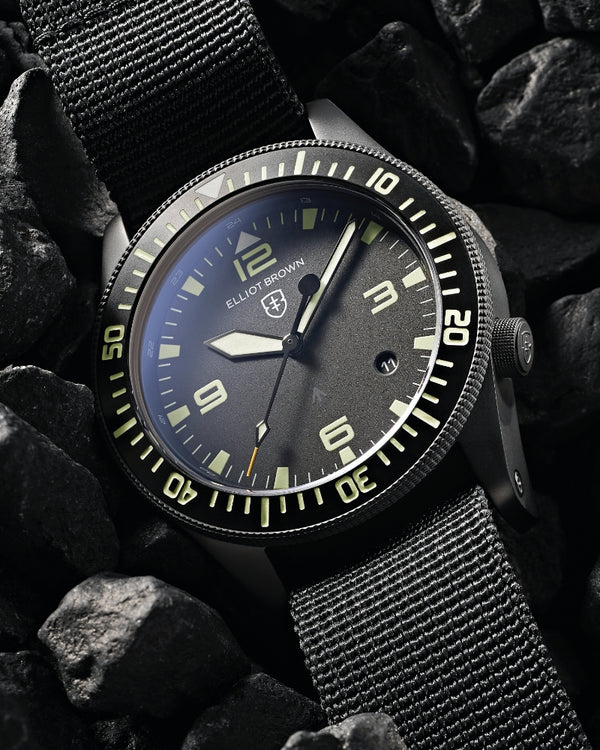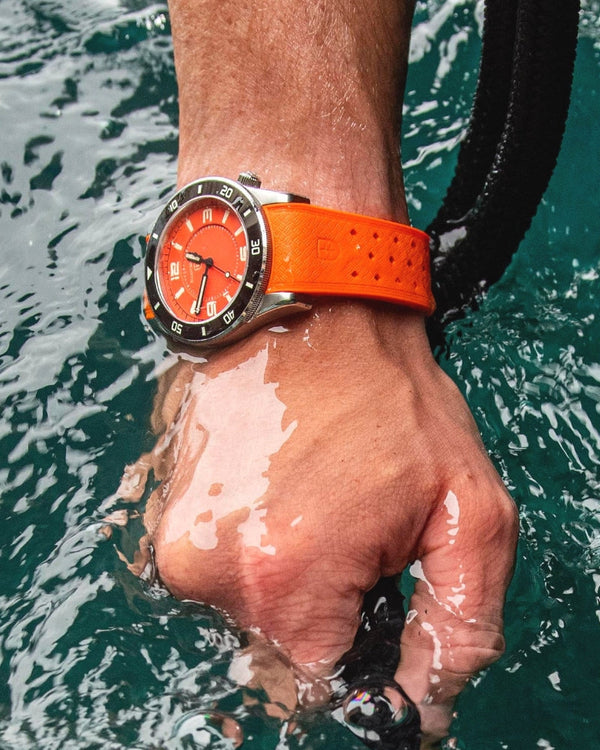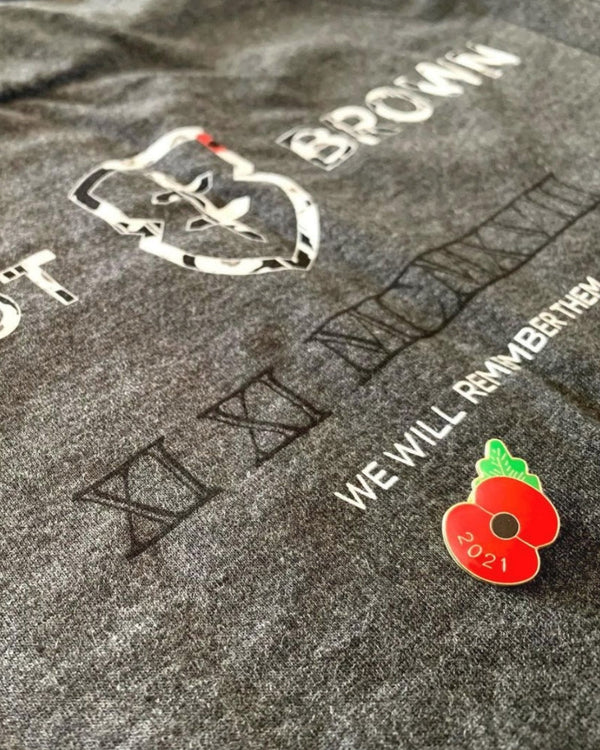Mission Everest - A follow up with Staz from Thrudark

From Poole to the Death Zone: How Planning, Not Luck, Put EBINOX on Everest.
In May 2025, four Special Forces veterans completed one of the most demanding endurance challenges ever attempted - the fastest London>Everest>London expedition, whilst wearing our Holton Auto GMT: EBINOX and to raise funds for military charities.
For most, summiting Mount Everest is a once-in-a-lifetime goal requiring up to eight weeks of acclimatisation. The Mission Everest team set out to complete the journey in just seven days; from leaving London to reaching the summit and returning home.
On 21 May 2025, after arriving at Everest Base Camp only three days earlier, the four veterans stood on the roof of the world, redefining high altitude mountaineering.
 We caught up with Staz post Mission Everest to get the skinny on the world first, what inspired the trip and how all the preparation allowed them to achieve this recording breaking achievement.
We caught up with Staz post Mission Everest to get the skinny on the world first, what inspired the trip and how all the preparation allowed them to achieve this recording breaking achievement.
Why and where did the idea come from?
The idea for Mission Everest was formulated like all good plans, over too many beers…
It also came from a desire to test both myself and our ThruDark kit in the harshest environment on earth. We don’t just stand by our kit, we stand in it, Everest felt like the ultimate proving ground. It wasn’t about breaking records; it was about pushing limits, physically and mentally, and demonstrating what true resilience looks like. By veterans, for veterans, our main goal is raising as much money as possible for vital military charities.
How long did you prep for?
In truth, I’ve been preparing for this kind of challenge my entire life. My time in the military laid the foundation, but specific prep for Everest began months beforehand, a mix of endurance, strength, altitude conditioning, and mindset work. Every session had a purpose: to ensure that when the time came, I could perform under pressure. Total time from inception to climb was around 4 months.

What was so unique about your acclimatisation that enabled you to be fit to complete Mission Everest in 7 days?
We approached acclimatisation differently. Instead of spending weeks on the mountain, I pre-acclimatised in a hypoxic environment back in the UK, mimicking the conditions at altitude. This allowed us to hit the ground running in Nepal and drastically cut the time usually required to climb safely. It was a calculated risk, but one built on solid data, preparation, and the right support team.
What kit did you take?
Everything I took had to earn its place. ThruDark outerwear formed the backbone of my system, layering built for versatility, protection, and performance. I also carried essential climbing hardware, oxygen systems, a lightweight pack and of course, an Elliot Brown watch. The goal was to move light but stay capable of facing whatever the mountain threw at me. We also each had a bespoke ThruDark custom summit suit, designed to withstand the harshest of conditions.
What did it feel like when you got the green light for Mission Everest to start?
Relief and focus. You spend so long planning and preparing, and when you finally get the nod, it’s game time. All the noise fades away. Every ounce of energy goes into the mission ahead and focusing on the success of the mission.

What did each day look like in the expedition from start to finish?
Each day had a clear objective. Early starts, check kit, eat what you can, climb, rest, repeat. Altitude strips everything back to basics, you focus on the next step, the next breath. Every movement has intent because every bit of energy matters.
How long were you actually on Mt Everest for?
From arrival at Base Camp to descent, around 4 days in total. That’s what made this mission unique, compressing what’s usually a six to eight week expedition into seven days total door to door.
What was summit day like? Weather? Other teams?
Summit day was brutal but clear, freezing winds initially which cleared and thin air. You’re running on instinct and discipline by that point. There were a few other teams moving but the summit ridge and summit we had to ourselves which is very rare, but at that altitude, you’re in your own world. Every step is a battle, but the view from the top makes every bit of suffering worth it.

Coming down is just as dangerous as going up, how did you stay focused?
You remind yourself it’s not over until you’re safely down. Fatigue sets in, but complacency kills. I stayed sharp by breaking it down into micro-goals, point to point, rope to rope. The descent demanded as much respect as the climb.
How did the watch cope with being on the outside of your pack for the mission?
The watch performed exceptionally. It was exposed to freezing temperatures, high winds, and constant movement, yet it didn’t miss a beat. That reliability is critical when you’re operating in an environment where failure isn’t an option. It was strapped to my backpack so I could access it quickly without having to remove my gloves etc. It was exposed to the harsh elements and tough climbing conditions throughout, and was excellent.
 Doing something that’s never been done before can cause controversy, how do you feel about the press received around this record-breaking expedition?
Doing something that’s never been done before can cause controversy, how do you feel about the press received around this record-breaking expedition?
Anytime you do something different, people will talk. I respect that. What matters to me is that we did it safely, professionally, and with integrity. The mountain doesn’t care about headlines, it humbles everyone the same way.
Would you do it again or encourage others to try?
Absolutely, but only with the right preparation and respect for the mountain. Everest demands total commitment. If you’re chasing a quick win, it’ll beat you. But if you go in with purpose, discipline, and humility, it’s one of the most powerful experiences you can have.

















